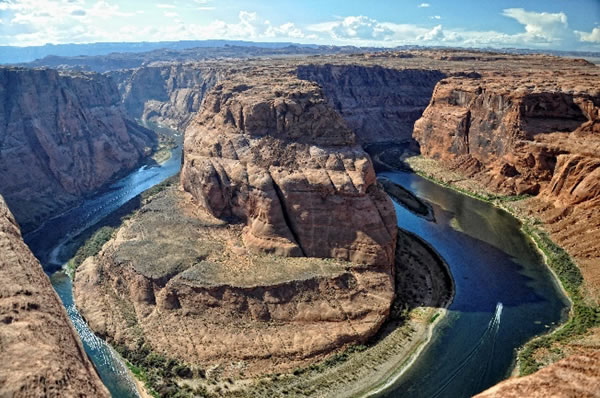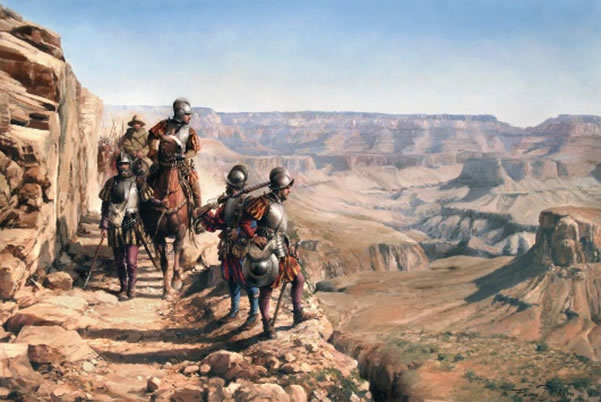Home »
By Otto Solórzano Silva
The River originates in the rocky mountains of the state of Coloradom USA. Its delta can be found on the margins of the Gulf of California within a protected area in Mexico.
It is the principal source of water in the American West.
It forms along its vast course wonders such as the Grand Canyon. It encompasses eleven national parks and it supplies water for more than 40 million people. It is the largest river on the North American Pacific coast, with 2 300 km in length.
The river and mankind
The Colorado River basin has been inhabited by humans for more than 8,000 years. The indigenous groups that inhabit the region in the present day are descendants of settlers who arrived in the area approximately 1,000 years ago.
The region came into contact with Europeans for the first time during the expeditions of Spanish Conquistador, Francisco Vazquez de Coronado in the XVI century. Its voyages find themselves amongst the greatest and most daunting of the age of exploration.
The arrival of new settlers
The river basin remained a part of Mexico until 1847 when it was conquered by the United States.
During 1860, the California gold rush provoked massive migration to the upper Colorado basin.
Overexploitation of the river
Its massive water current and sufficient steepness are utilized to produce hydroelectric energy, which is generated by dams constructed along its course.
The enormous water consumption human’s demand on the river has dried its lower 160 km on the margins of the Sea of Cortes.
The river finds itself practically extinct when it crosses the Mexican border.
The international waters treaty signed by Mexico and the US on the third of February 1944 guaranteed the annual delivery of 1 850.234 million square meters of water to the southern nation, a promise that in the modern day is not being fulfilled.
Prominent environmental movements in the southwestern United States have managed to prevent further modifications to the river´s course together with the construction of new dams.
Due to water scarcity, the US has had to look for alternative sources to supply the enormous demand of cities such as L.A. and Las Vegas. For example desalination plants.
The river is drying rapidly. Soon it will not be able to supply the many communities that depend on it, something scientists have warned us about for years. Global warming has exacerbated prolonged dry periods, which have lowered the water level in lakes Meade and Powel (both supplied by the Colorado River) to more than 10 meters below normal levels.
References
Best, A. (2019, enero). Hydraulic Empire, sharing a legacy, carving a future for the Colorado River. Lincoln Institute of Land Policy. Recuperado de https://www.lincolninst.edu
Verdú, P. (20 de marzo, 2022). Vázquez de Coronado, el conquistador que buscaba tesoros y encontró el Gran Cañón. La Vanguardia. Recuperado de https://encrypted-tbn0.gstatic.com
Wikipedia. La enciclopedia libre. (22 de diciembre, 2022). Delta del Río Colorado. Recuperado de https://es.wikipedia.org/
Wikipedia. La enciclopedia libre. (1 de enero, 2017). Archivo: La conquista del Colorado.jpg. Recuperado de https://es.m.wikipedia.org
Wikipedia. La enciclopedia libre. (24 de septiembre, 2021). Río Colorado. Recuperado de https://es.wikipedia.org, https://es.wikipedia.org/, https://upload.wikimedia.org



